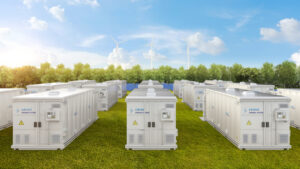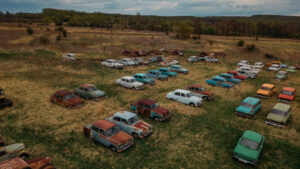ASX Renewable Energy Stocks: Woodside, FFI say giant green hydrogen project in NZ ‘technically feasible and commercially sound’

Pic: Photo and Co/ The Image Bank/ Getty Images
- Two Australian companies enter final stage of negotiations to develop “world’s largest” green hydrogen facility in NZ
- The project is being developed by South Green Hydrogen, a joint venture between Meridian Energy and Contact Energy
- EV1 awards FEED contract for graphite processing plant in Tanzania
And then there were two. Woodside (ASX:WDS) and Fortescue Future Industries (FFI) have entered the final stage of negotiations to become lead developer of the world’s largest green hydrogen production facility in Southland, New Zealand.
According to South Green Hydrogen, a joint project by Meridian Energy (ASX:MEZ) and Contact Energy (ASX:CEN) designed to evaluate the opportunity to produce green hydrogen in NZ’s southernmost region, the two companies will provide more detailed proposals by the end of August.
The final selection of lead developer will then be announced shortly after.
Meridian Energy CEO Neal Barclay said the two proposals, which have been received during the initial selection process made it clear that large-scale production and export of green hydrogen or green ammonia is “technically feasible and commercially sound”.
“This is a complex project in a relatively new global market, and both the final counter-parties have given us confidence that an economic project is achievable,” he said.
“Both have demonstrated that global markets for green hydrogen and green ammonia are imminent, and both are engaged in discussions with customers about buying the large volumes that the Southland plant will produce.
The final two counter-parties were selected from four companies that were invited to submit responses to the Southern Green Hydrogen request for proposal in May.
The next stage of the process will see Murihiku Regeneration, representing both Murihiku Rūnaka and Ngāi Tahu interests, working closely with Southern Green Hydrogen and the remaining potential developers to ensure the best possible outcome is achieved.
Evolution Energy Minerals (ASX:EV1)
EV1 has awarded CPC Engineering the Front End Engineering Design (FEED) contract for the processing plant at the Chilalo Graphite Project in Tanzania, on the basis of their expertise and experience in graphite processing and successful commissioning of projects- such as Syrah Resources Limited’s Balama Graphite Project in Mozambique.
The scope of the FEED includes the evaluation of opportunities to improve plant design and, optimise and update estimated capital expenditure.
CPC has an “extensive in-house database” on previous projects, scopes of work, equipment, schedules, costs and specifications, that ensures the efficient use of personnel and relevant data.
It has completed a large number of bankable feasibility studies and achieved a successful and proven industry track record in executing project design and construction developments that have been delivered on time and within budget.
EV1 managing director Michael Bourguignon said the commencement of the FEED study is a significant milestone towards the realisation of the Chilalo Graphite Project.
“We are pleased to be partnering with CPC, a firm I have previously executed projects with,” he said.
“I worked closely with CPC in the development of Syrah’s Balama Graphite Project and believe that, combined with my own experiences, their considerable insight and learnings will be invaluable to the development of our Chilalo Project.
“We remain firmly focused on bringing Chilalo into production.”
The FEED is expected to commence immediately and is targeted for completion by September 2022.
Australian Vanadium (ASX:AVL)
AVL’s renewable energy subsidiary, VSUN energy, is constructing the first vanadium redox flow battery (VRFB)-based standalone power system for a mining operation in WA with a target of 100% renewable energy use.
This system will be the first of its kind deployed on an Australian mine site and has been built by Spanish VRFB manufacturer E22, a company backed by globally renowned renewable energy company Gransolar Group.
The VRFB for the project has been constructed with 300kWh of available energy storage capacity and will be paired with ground mounted solar panels and integrated with a diesel generator to provide back up (if required).
The battery is currently being prepared for shipment from Spain and will travel to Fremantle Port where it will undergo SPS testing prior to deployment.
During this time AVL and VSUN Energy will showcase the unit to various mining clients, utilities and others who have shown a strong interest in the vanadium-based technology.
Related Topics
UNLOCK INSIGHTS
Discover the untold stories of emerging ASX stocks.
Daily news and expert analysis, it's free to subscribe.
By proceeding, you confirm you understand that we handle personal information in accordance with our Privacy Policy.








